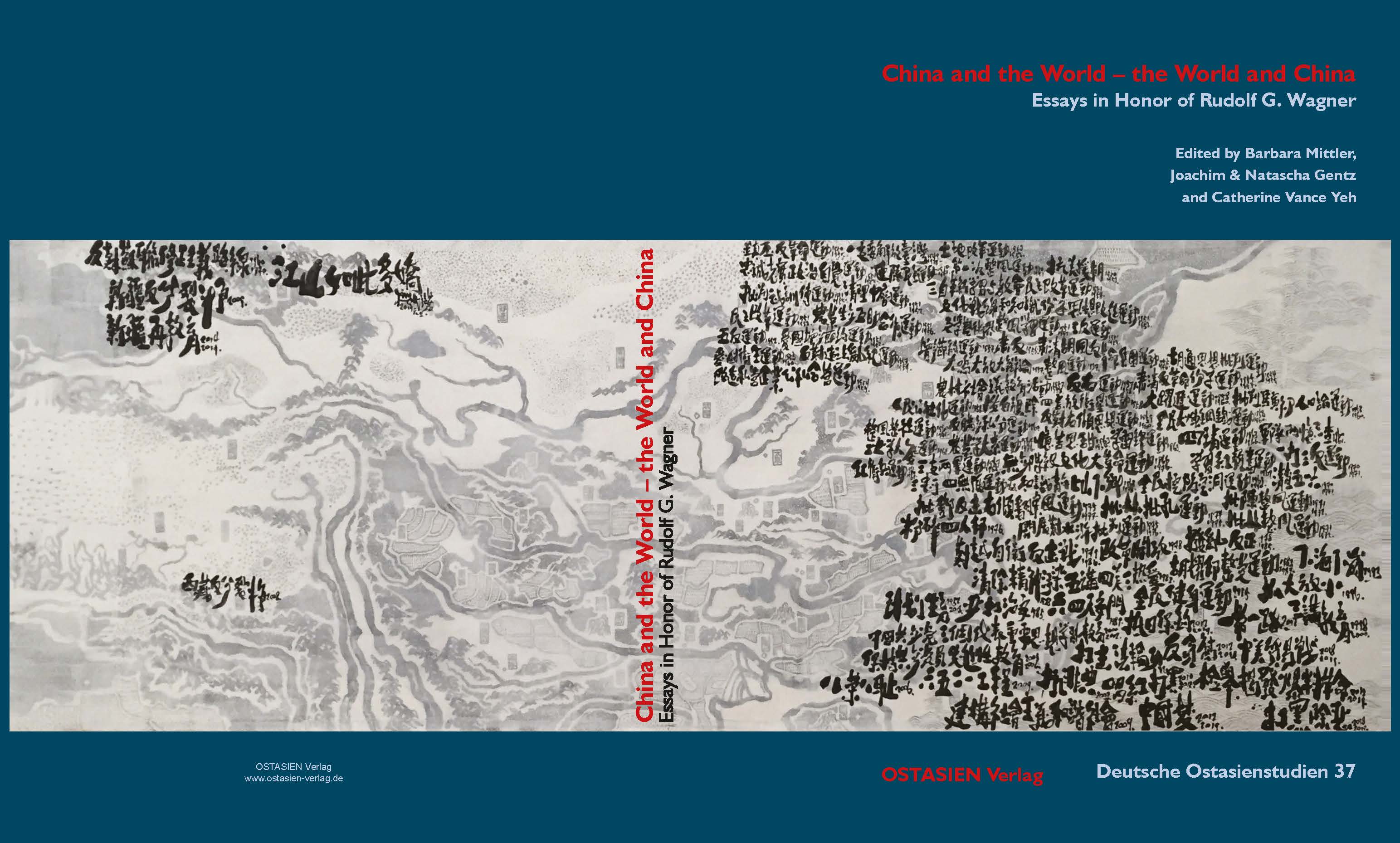
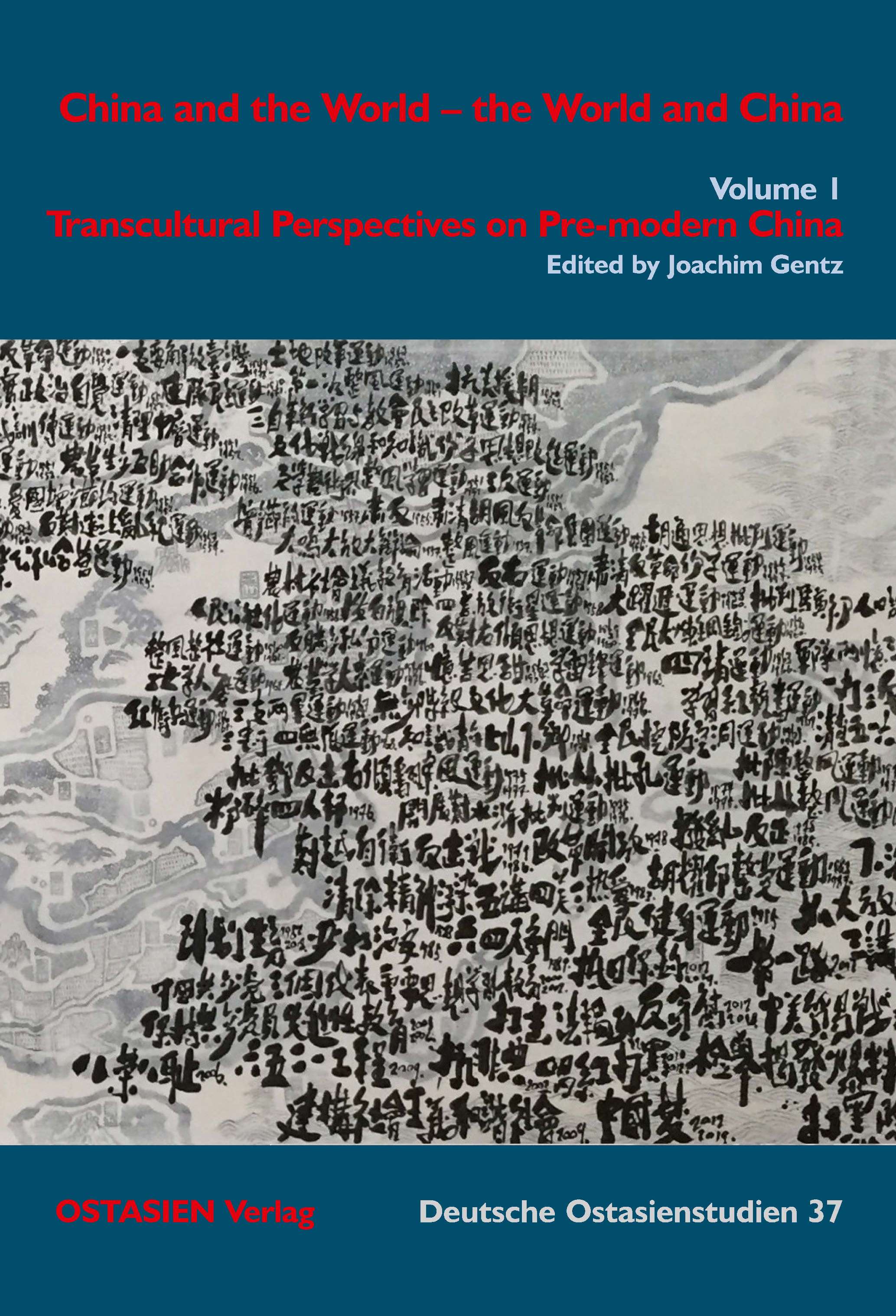
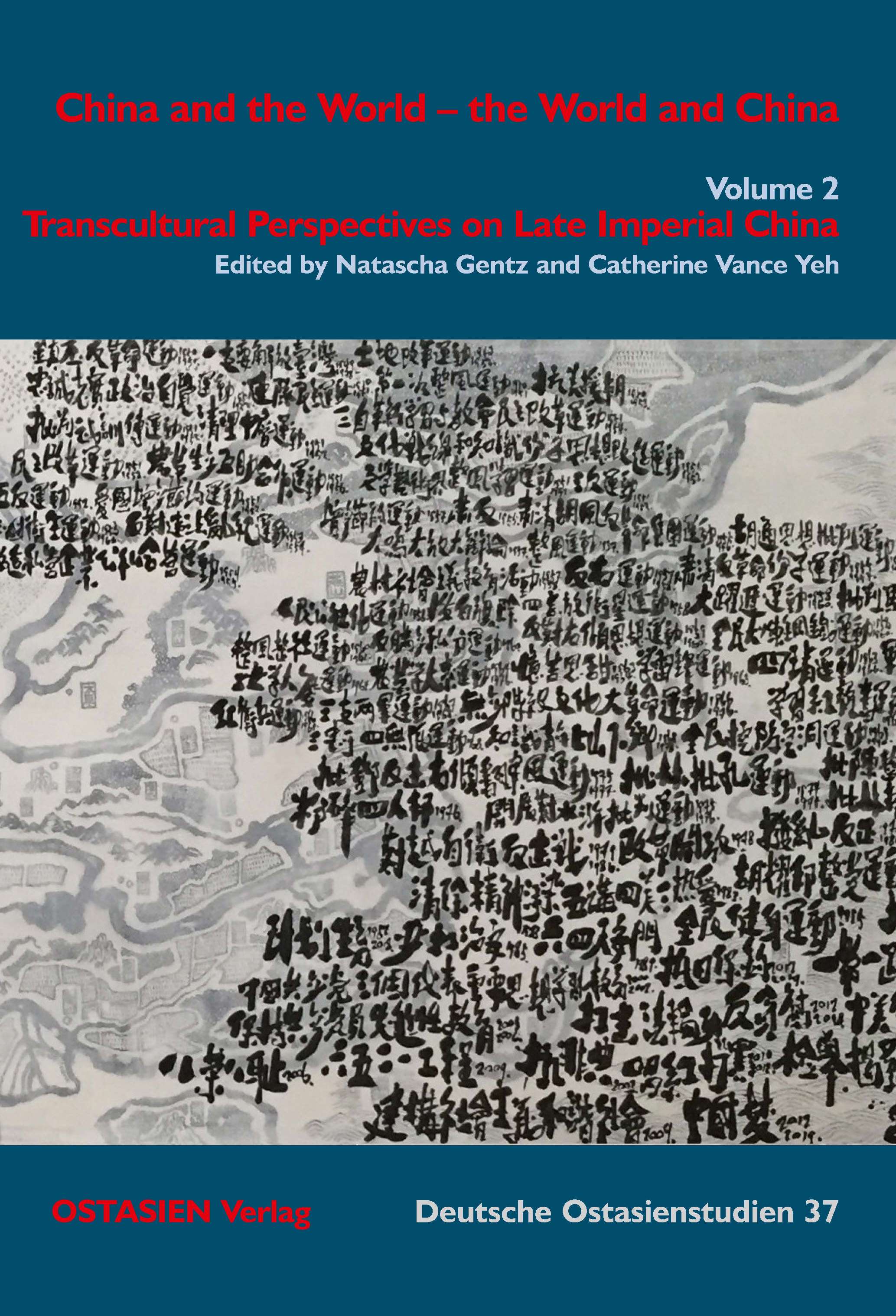
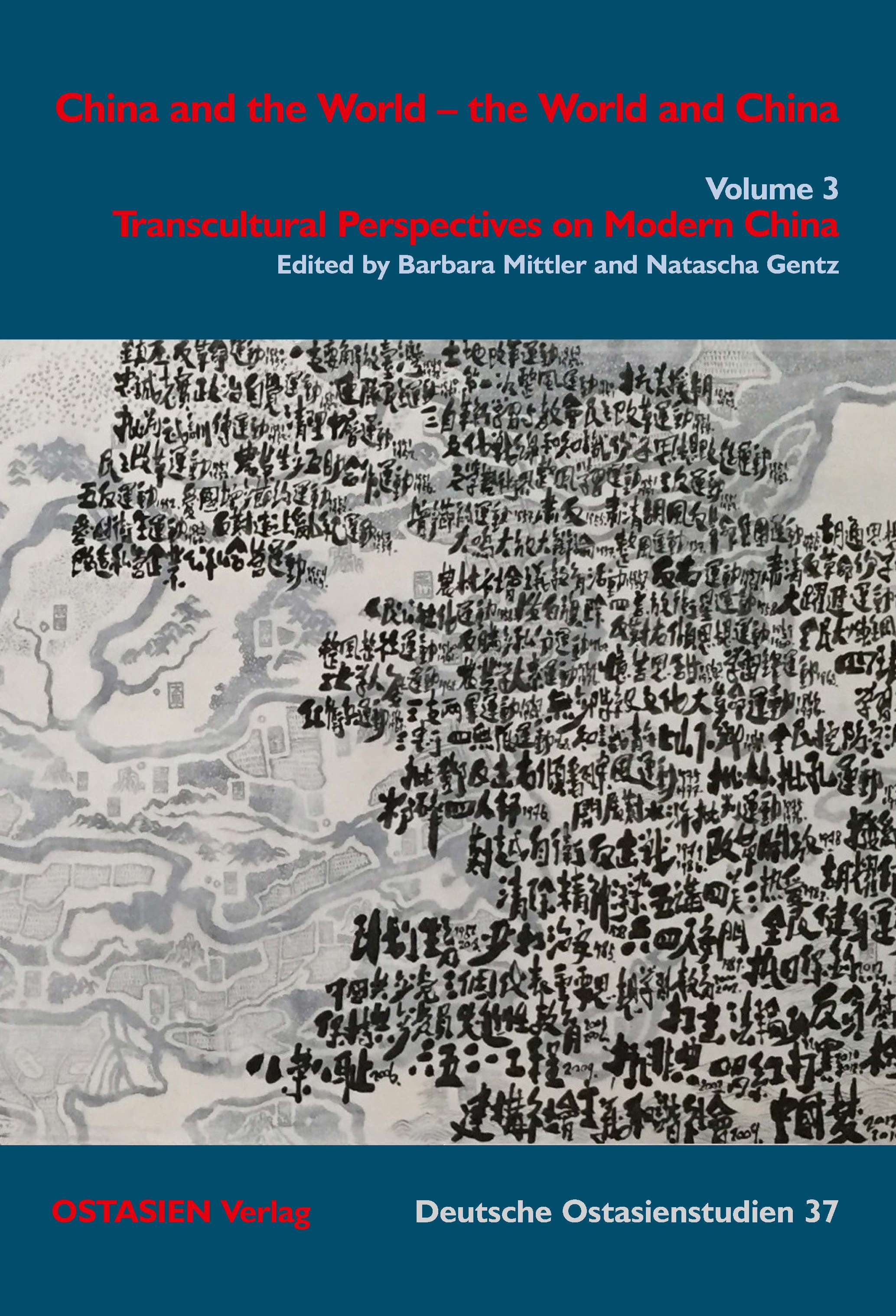
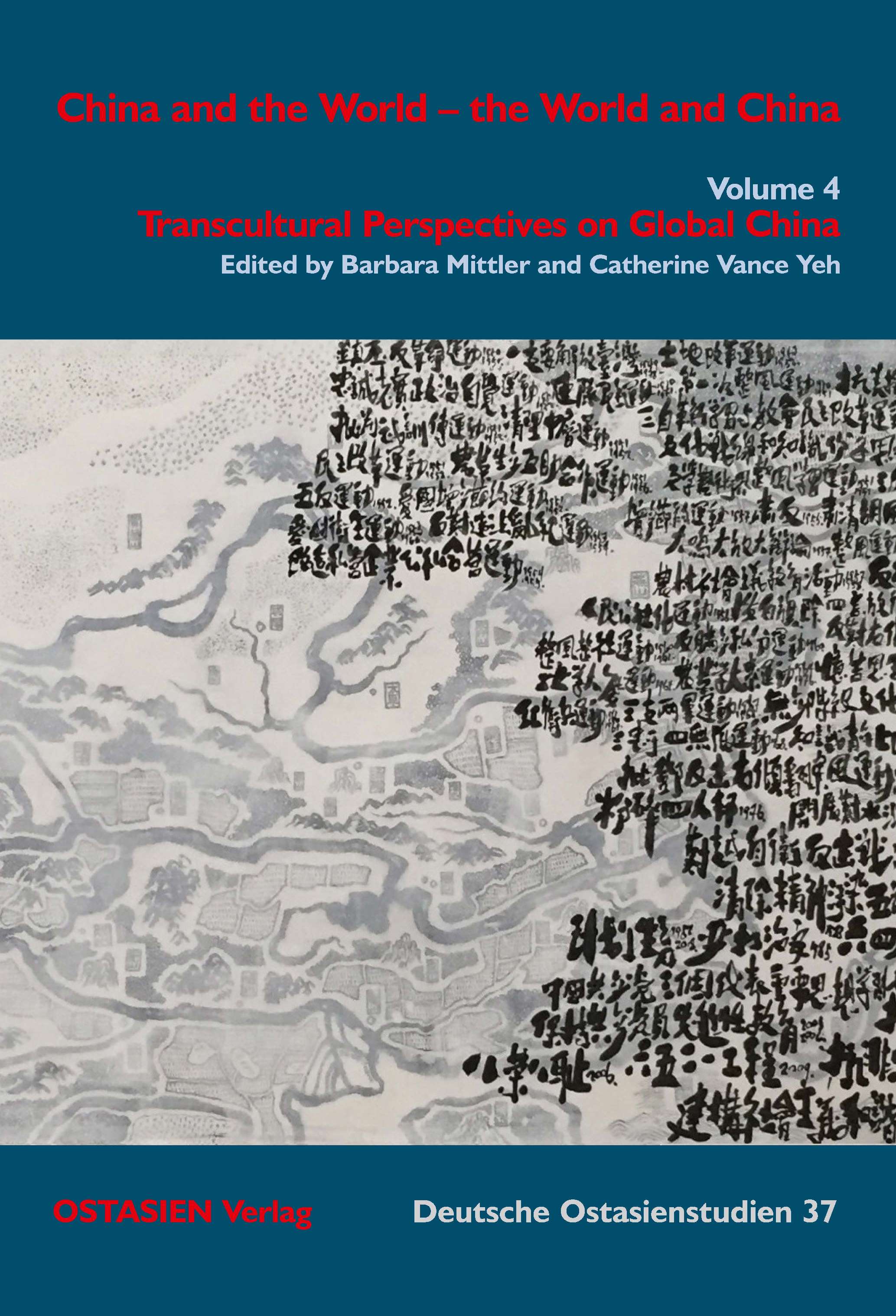
Pressestimmen
in Auskunft: Zeitschrift für Archiv,
Bibliothek und Information 42.1 (2022),
S. 175-178.
| OSTASIEN Verlag | |
| Kontakt | |
| Reihen | |
| Zeitschriften | |
| Gesamtverzeichnis | |
| Impressum | |
 |
|
 |
|
 |
|
 |
|
 |
|
| Book presentation as download | |
Pressestimmen |
|
| Rezension von Hartmut WALRAVENS in Auskunft: Zeitschrift für Archiv, Bibliothek und Information 42.1 (2022), S. 175-178. |
China and the World – the World and China |
|
| Essays in Honor of Rudolf G. Wagner | |
Edited by Barbara Mittler, Joachim & Natascha Gentz and Catherine Vance Yeh |
|
Deutsche Ostasienstudien 37
OSTASIEN Verlag, Gossenberg Hardcover (25,0 x 17,6 cm), 4 volumes, altogether 1000 pages [in limited number available with book slipcase]
ISBN-13: 978-3-946114-63-5 (978-3946114635, 9783946114645) ISBN-10: 3-946114-63-6 (3946114635)2019. € 148,00 Distribution by CHINA Buchservice [contact] |
|
A wide range of topics is covered in this collection of four volumes of essays in honor of Rudolf G. Wagner. The expansive time frame from pre-modern to contemporary China in China and the World – the World and China reflect the breadth of his own scholarship. The essays are also testimony to his ability to connect with scholars across the globe, across disciplines and generations. The first volume (Transcultural Perspectives on Pre-modern China) brings together a set of contributions relating to the pre-modern period which reveals thematic clusters that correspond to the three main periods of Chinese pre-modern history. While the first six contributions on the early China period focus on conceptual questions of text interpretation and reconstruction, the following five on medieval China all deal with religious topics whereas the last four contributions, covering the late imperial period, address issues of the entangled relationship between the self and the exterior. The contributions in the second volume (Transcultural Perspectives on Late Imperial China) are linked by a common interest in questions of transculturality, hybridity, contact zones and third spaces. These are concepts and ideas quite central to Rudolf G. Wagner’s scholarly oeuvre. Each of the contributions addresses these notions in their own particular manner, sometimes more, sometimes less explicitly. But there is more: the authors in this volume also share an interest in the hidden, the unsaid, the unknown – forgotten people and objects become main protagonists. In addition, the importance of translation as a cultural practice and new perceptions and understandings of the role of translation in Late Qing cross-and transcultural interactions and the significant impact of particular actor networks involved in these translations emerge as two more common questions addressed throughout this volume. The studies in the third volume (Transcultural Perspectives on Modern China) span a long twentieth century of cultural production in China. All of them, each in a different manner, deal with one crucially important set of questions, one that has been very much at the heart of Rudolf G. Wagner’s work: questions of readership and reception, and, related to this, of persuasion, legitimation and trust: how does one successfully draw an audience in China; how does one convince; what is an effective rhetorics or argumentation? The fourth and last volume (Transcultural Perspectives on Global China) is testimony to the imprint Rudolf G. Wagner has made beyond many borders, with contributions from Indology to Egyptology and Theology, from world history, to world literature, to Esperanto as a world language, and talking about travelling concepts and objects such as tea, comics, and knowledge. This volume also contains a number of reminiscences about Rudolf G. Wagner, the border-crosser: his radical bonmots, his role as great master-teacher for people from many different walks of life, in short, his expansiveness, … and more. |
|
| Contents | |
| Volume 1: Transcultural Perspectives on Pre-modern China | |
| Foreword: The Joys of Transculturality – or Research and Teaching between China and the World: A Tribute to Rudolf G. Wagner (Monica JUNEJA and Barbara MITTLER) |
|
| Editor’s Introduction (Joachim GENTZ) |
|
| Zhuangzi’s Twinkle and Methods without Truth (Joachim GENTZ)) |
|
| Materialität antiker Handschriften: Beispiele aus China (Enno GIELE) |
|
| Concepts of “Authenticity” and the Chinese Textual Heritage in Light of Excavated Texts (Anke HEIN) |
|
| Biographical Genres and Biography: The Case of Yan Zun 嚴遵 (CHEN Zhi) |
|
| The Rule of Law in Eastern Han China: Some Cases of Murder, Suicide, Theft, and Private Dispute (Robin D. S. YATES) |
|
| Zhao Qi 趙岐 and Late Han Pedantic Conceptual Analysis (Christoph HARBSMEIER) |
|
| Antlers? Or Horns? Towards Understanding Gan Bao 干寶, the Historian (Michael SCHIMMELPFENNIG) |
|
| Kumārajīva’s “Voice”? (Michael RADICH) |
|
| Transcending Boundaries: Afterlife Conceptions in Entombed Epitaphs and Votive Steles of the Six Dynasties’ Period (Friederike ASSANDRI) |
|
| Motifs Traveled with Intentions: Mapping Tang China and the World through Pictorial Screens in the Nara Period Japan (710–794) (WANG Yizhou) |
|
| Studying Fears of Witchcraft in Traditional China: A Close Reading of Three Examples from Hong Mai’s The Records of a Listener (Barend TER HAAR) |
|
| Chi 癡, pi 癖, shi 嗜, hao 好: Genealogies of Obsession in Chinese Literature (LI Wai-yee) |
|
| Entangled Histories: Insights Gained from a Hodological Approach to the Blue Beryl’s Thanka on Metaphors of the Body (Elisabeth HSU) |
|
| Manchu Sources and the Problem of Translation (Mark ELLIOTT) |
|
| Kalmyk Echoes, Torghut Returns: Poet-Exiles in a Time of Shrinking Frontiers (Haun SAUSSY) |
|
| Volume 2: Transcultural Perspectives on Late Imperial China | |
| Editors’ Introduction (Natascha GENTZ and Catherine Vance YEH) |
|
| Kim Chŏng-hŭi 金正喜 (1786–1856): A Late Chosŏn Korean Yangban 兩班 in Qing China (Benjamin A. ELMAN) |
|
| Early Protestant Historiography and the Travel of Some European “National Characters” to China: Karl F. A. Gützlaff’s Gujin wanguo gangjian 古今萬國綱鑑 (1838) (Federica CASALIN) |
|
| Para/Texts and the Construction of Life Histories in Women’s Literary Collections in Late Imperial China: The Case of Chen Yunlian 陳蘊蓮 (ca. 1800–ca. 1860) (Grace S. FONG) |
|
| Shanghai as Entertainment: The Cultural Construction and Marketing of Leisure, 1850–1910 (Catherine Vance YEH) |
|
| 从戏剧到演说——晚清画报中的声音 (CHEN Pingyuan 陈平原) |
|
| 視覺奇觀與權力地理——《點石齋畫報》緬甸的空間政治與文化敘事 (CHENG Wen-huei 鄭文惠) |
|
| The Pitfalls of Transnational Distinction: A Royal Exchange of Honors and Contested Sovereignty in Late Qing China (Elisabeth KASKE) |
|
| Medical Translation in Canton, 1850–1918 (Ellen WIDMER) |
|
| Kant in China: Eine philosophische Wahlverwandtschaft (Joachim KURTZ) |
|
| Ying Lianzhi: A Journalist Misfit Negotiating the Founding of the Tianjin Dagongbao (Natascha GENTZ) |
|
| Shandong, the Yellow River, the Local and the Global (Iwo AMELUNG) |
|
| 從華夷之「辨」到華夷之「變」——華語語系研究再思考 (David WANG 王德威) |
|
| Volume 3: Transcultural Perspectives on Modern China | |
| Editors’ Introduction (Barbara MITTLER and Natascha GENTZ) |
|
| Is There a Common Reader in This Text? Understandings of Cholera in Daily-Use Compendia (Joan JUDGE) |
|
| Useful New Knowledge for Everyone to Digest? Transcultural Remakings of the Encyclopedic in the Encyclopedic Dictionary of New Knowledge (Xin wenhua cishu 新文化辭書, Shanghai 1923) (Barbara MITTLER) |
|
| Xin wenhua cishu (An Encyclopedic Dictionary of New Knowledge): An Exploratory Reading (Leo Ou-fan LEE) |
|
| Betting on a Cardinal Virtue: Transcultural Formations in Shanghai Finance (Bryna GOODMAN) |
|
| Cultural Imperialism Redux? Reassessing the Christian Colleges of Republican China (Elizabeth J. PERRY and Hang TU) |
|
| The Emergence of the Modern Civil Engineer in China, 1900–1940 (Pierre-Étienne WILL) |
|
| Steaming Toward the Future: Cao Ming, Locomotive, and Transcultural Socialism (Nicolai VOLLAND) |
|
| Waiguo Qiaomin: A Few Comments on the CCP’s Policy Toward Foreigners in the Late 1940s (Flavia SOLIERI) |
|
| The South China Sea and how It Turned into “Historically” Chinese Territory in 1975 (Johannes L. KURZ) |
|
| Beijing Water 1908–2008: The Development of China’s Capital as Seen through the Lens of Its Most Elusive Resource (Thomas HAHN) |
|
| Xi Jinping and the Art of Chrono-Ideological Engineering (Heike HOLBIG) |
|
| Innovationsrhetorik chinesischer Prägung: Eine Analyse der Rede Xi Jinpings vom 9. Juni 2014 vor der Chinesischen Akademie der Wissenschaften in Peking (Christian SCHWERMANN) |
|
| Volume 4: Transcultural Perspectives on Global China | |
| Editors’ Introduction (Barbara MITTLER and Catherine Vance YEH) |
|
| 是享受、还是忍受 “形单影只” – 比较视野中的 “孤独” 问题 (LIU Dong 刘东) |
|
| The Quest for Chinese Tea (Dietmar ROTHERMUND) |
|
| Einige Gedanken zu Wissenschaft und Gesellschaft in China und dem Westen (Helwig SCHMIDT-GLINTZER) |
|
| China in Global Context: An Alternative Perspective on World History (Paul A. COHEN) |
|
| Why is Esperanto so Popular in Japan? The Case of Shimada Kenji (Joshua FOGEL) |
|
| Another China. Representations of China and the Chinese in European Comics and Graphic Novels (Michael LACKNER) |
|
| Lost in Transhimalayan Transculturality. Opium, Horses and an Englishman between China, Tibet and Nepal (Axel MICHAELS) |
|
| Karl Marx’s Critique of Religion and Christian Theology (Michael WELKER) |
|
| The Expansive Scholar (Perry LINK) |
|
| 汉学界的 “广大教主” – 我眼中的瓦格纳先生 (XIA Xiaohong 夏晓虹) |
|
| Der Meister der Bonmots: Eher eine freundliche Polemik als ein giftiger Essay zur Frage der Sinologie als Wissenschaft (Wolfgang KUBIN) |
|
| Rudolf Wagner and the Taiping Rebellion: A “Culturalistic” Approach (Jan ASSMANN) |
|
| Rudolf G. Wagner’s Photographic Memory (Nara DILLON) |
|
| A Handful of Haiku (Mark ELVIN) |
|
| Moving Mountains: Of Foolish Old Men Who Want to Move Mountains |
Berge versetzen: Von verrückten alten Männern, die Berge versetzen wollen |
愚公移山 (Barbara MITTLER) |
|
| Two Images from Mount Tai, in Homage to Rudolf Wagner (Lothar LEDDEROSE) |
|
| Appendix: List of Publications by Rudolf G. Wagner | |
| Of Sun, Moon and Stars: Con-/Traversing China and the World in Salon Style – in place of a Tabula Congratulatoria (Barbara MITTLER) |
|
| Cover Image: Yang Jiechang’s 杨诘苍 Mountains and Rivers so Beautiful (Country of Movements 1949–2019)” | |
| ——— | |
| Illustrations (outside the articles): | |
| “Every Day is a Good Day” (calligraphy by Carma Hinton) | |
| “Sequoia in the Sierra Nevada, California” (painting by Mark Elvin, 1963) | |
| paintings and pseudo-calligraphies by Nanny Kim | |